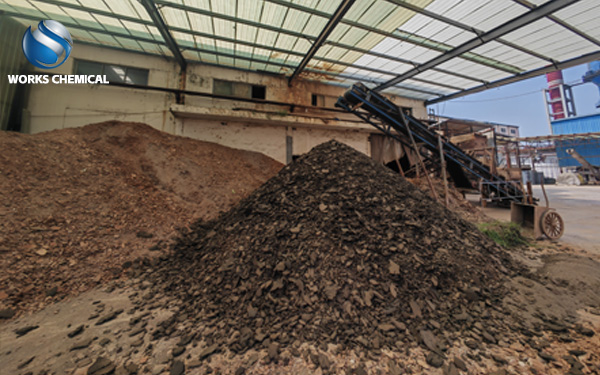
Under the dual pressure of stricter environmental protection policies and rising operating costs, sludge treatment has become a pain point for many enterprises. The traditional plate and frame dewatering process relies on the addition of a large amount of chemicals, but often falls into the predicament of "high chemical dosage, high treatment cost, and persistently high moisture content of the mud cake". Sludge efficiency enhancer, through technological innovation and process synergy, brings breakthrough solutions to the sludge dewatering field, helping enterprises achieve a win-win situation of economic and environmental benefits.

I. Direct Pain Points: The "Triple Dilemma" of Traditional Dehydration Processes
Drug dependence
The traditional process takes polyaluminium chloride (PAC) and polyacrylamide (PAM) as the core, but the high proportion of organic matter (such as proteins and polysaccharides) and cell-bound water in the sludge leads to a persistently high demand for chemicals, with the cost accounting for more than 50%.
Dehydration efficiency bottleneck
Conventional chemicals can only remove interstitial water but are ineffective against intracellular bound water. The moisture content of the mud cake often remains at 80% to 85%, and it is prone to form a "soft core" phenomenon (dry outside and wet inside), increasing the difficulty of subsequent treatment.
Poor process synergy
Problems such as the disconnection between the dosage of chemicals and the filtration parameters, clogging of filter cloths, and long filtration cycles occur frequently, and the efficiency of the equipment has not been fully released.
Ii. Technological Innovation: Breaking the Deadlock of Sludge Enhancers
Organic matter cracking technology - releasing bound water
Sludge enhancer is a modified polymer product with multiple functions, precisely targeting the organic matter in sludge:
This product can significantly increase the thickness and consistency of mud biscuits and has a fast response speed. This is a modified polymer product with multiple functions, which can replace the traditional conditioning process in the deep dewatering of sludge. It can truly achieve convenient use, energy conservation and consumption reduction, lower the cost of solid waste treatment, not change the nature of sludge, have no impact on ph and organic matter, and have no side effects. It has the characteristics of being versatile and comprehensive.
Iii. Cost Reduction and Efficiency Improvement: Data testifies to effectiveness
Take a certain municipal sewage treatment plant as an example:
Before treatment: The moisture content of the sludge was 83%, the dosage of PAC was 10kg/t of dry sludge, and the dosage of PAM was 2.5kg/t.
After using the sludge enhancer:
The moisture content was reduced to 62%, and the volume of the mud cake decreased by 45%.
The dosage of PAC was reduced to 5kg/t, and the dosage of PAM was reduced to 1.5kg/t.
The comprehensive processing cost decreased by 28%, and the service life of the filter cloth was extended by 30%.
Comparison of economic benefits
Iv. Implementation Path: From Pilot to Full-process Optimization
The small-scale trial stage
Take the sludge from the site and test the effects of different sludge enhancer formulas on the moisture content and specific resistance.
Determine the optimal dosage (usually 5%-10% of the dry sludge volume) and the reaction time (10-15 minutes).
Pilot production stage
Install the sludge efficiency enhancer dosing system on the plate and frame filter press to optimize the filtration parameters (pressure, pressure holding time, feed rate);
Monitor the moisture content of the mud cake and the occurrence rate of "runny core", and adjust the process combination.
Full-process verification
Run continuously for 7 to 15 days to calculate the cost of chemicals, treatment efficiency and the stability of equipment operation.
Compare the cost per ton of water treatment and sludge disposal expenses between the traditional process and the efficiency enhancer process.
V. Long-term Value: Dual Empowerment of environmental Protection and Efficiency
Sludge resource utilization: The calorific value of the filter cake is increased by 10% to 15%. If it is used for incineration power generation, part of the treatment cost can be offset.
Carbon emission reduction contribution: The reduction in the dosage of chemicals directly lowers carbon emissions in the production process.
Compliance improvement: The moisture content of the sludge meets the standards (e.g., ≤60%), and complies with standards such as "Sludge Quality for Mixed Landfill in Sludge Disposal of Municipal Sewage Treatment Plants".
Conclusion: Technological innovation drives green transformation
The sludge efficiency enhancer not only resolves the chronic problems of the traditional dewatering process, but also provides sustainable returns for enterprises' environmental protection investment through cost reduction and efficiency improvement throughout the entire process. Facing the "cost pain" and "efficiency predicament" of sludge treatment.